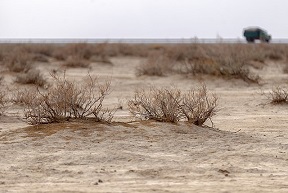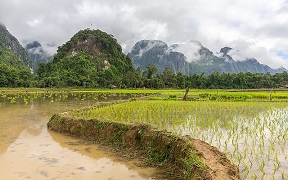A recent blog by Nobel prize winner Jennifer Doudna in Wired Magazine explores the power of CRISPR – the discovery that lent her the Nobel prize. Particularly with regards to CRISPR’s power to feed the world.

Major challenges ahead for agriculture
Although there has not been much news about food shortages recently, to feed the world is still a precarious issue. Over the past sixty years, the world has seen a dramatic increase in agricultural productivity. A result of better production practices. Since 1961, we need about one third of the land to produce a fixed quantity of crops. It required just sixty years to get there! We needed this amount of productivity increase, or we would have run into massive global hunger. But will we be able to sustain this development?
One major factor to our advantage is the slower speed at which the world’s population grows. The world now numbers about 8 billion people. Global population still grows, but at the moment it is not expected to surpass 10 billion. On the other hand, much arable land is being lost, often as a result of modern agricultural methods; according to a recent UN report. Up to 40% of the global terrain has already been devalued. If nothing changes, says the report, an additional area of land the size of South America will be damaged by 2050. In other words: we are fighting an uphill battle. We need to produce more, both because of the growing global population and growing wealth worldwide; whereas the area of arable land decreases rapidly. And it’s not just arable land that we lose. Over the last 10,000 years the world has lost one-third of its forests. Of which loss, half occurred in the last century.

Can CRISPR feed the world?
So the question that Jennifer Doudna raises is: could CRISPR come to the rescue in these issues? And to what extent? Her answer is yes. She starts out noticing that we are just starting to make use of this new technology. So far, applications have mainly been in the medical sector. Through CRISPR, we developed therapies for people affected by genetic diseases. There are about 7,000 diseases resulting from known genetic defects – ranging from diabetes to infectious diseases.
But now we enter into the area of agricultural applications. With the promise that they can help us feed the world. We can use CRISPR to increase yields, reduce pesticide and water use, and protect crops against disease. And we could use CRISPR to breed cattle that can better withstand rising temperatures.
CRISPR and climate change
And now, we are starting to use CRISPR to fight climate change and its effects. Firstly, we could use CRISPR to reduce greenhouse gas emissions from agriculture. Many greenhouse gases, produced by microbes, are released from rice paddies; and from the guts of ruminant animals. With CRISPR, Doudna says, we could edit these microbes or shift the composition of microbial communities; resulting in a reduction or even elimination of greenhouse gas emissions.
And then, couldn’t we use CRISPR to enhance the ability of plants and microbes to capture CO2 and store it in the soil? By better transfer of atmospheric carbon to soil carbon? Replacing some of the soil carbon lost through modern agricultural practices?
Thirdly, much CO2 is being released into the atmosphere through production of fertilizer and pesticides. We could minimize these releases if we develop methods to grow crops with less inputs of such substances. We can use CRISPR to create plant varieties that require less fertilizer; or that are resistant by themselves to pathogens and pests, so that we need to use less pesticides.
And finally, we could use CRISPR to engineer plants to become better suited to new weather conditions and better feed the world. Meaning that they would be more tolerant to higher temperatures; and would require less water for their growth.
Major promise
So far, research hardly ventured into these new subjects. But there would be a major promise of such new developments. With them, Doudna says, ‘we will have the opportunity to radically improve human health in a holistic way; that can better safeguard our society and enable millions of people around the world to flourish.’
Interesting? Then also read:
CRISPR-Cas: a prize winning technology?
Duchenne muscular dystrophy CRISPR cure: just for the rich and well-connected?
Addressing climate change with self-fertilizing crops
